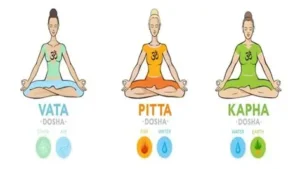Read time 5 minutes
There are moments when words can barely capture the waves of gratitude, and this blog is one of them.
Thank you, dear Universe, for continuing to bless me with recovery and good health. Every day feels like a new opportunity to honor this second chance with a purpose.

If you’ve ever been curious about how I integrate Ayurveda into my daily life, this post is for you.
Through Ayurvedic guidelines and medicines, I’ve been healing in ways that are both ancient and surprisingly relevant. These practices don’t just support my recovery; they nurture the mind, body, and soul.
While they’ve been a tremendous help to me, I always suggest talking to a trusted healthcare professional before making any lifestyle changes.
The Essence of Ayurveda
Ayurveda is more than a system of medicine; it’s a philosophy of living.
Born in India thousands of years ago, it sees health not just as the absence of disease but as a dynamic balance between the body, mind, and spirit.
At its core are the three doshas: Vata, Pitta, and Kapha.
These energies exist in all of us. Their unique mix shapes our physical characteristics, emotional tendencies, and even vulnerabilities. When the doshas are in harmony, we thrive. When they fall out of balance, discomfort and disease can follow.
Ayurveda encourages practices that maintain this balance, through food, mindfulness, and natural remedies.
Ayurvedic Guidelines vs. Medicines

So how do daily Ayurvedic guidelines work alongside Ayurvedic medicines?
Think of it like gardening:
Ayurvedic lifestyle principles prepare the soil, while the medicines plant the seeds of healing. They’re two parts of a beautiful partnership. While herbs and formulas target imbalances and symptoms, daily habits nurture an environment where those medicines can truly shine.
Here are some foundational pillars that support this synergy:
1. Dinacharya: A daily routine that aligns with natural rhythms
2. Ritucharya: Seasonal adaptations to diet and lifestyle
3. Emotional Hygiene: Practices for mental clarity and emotional balance
4. Rasayanas: Rejuvenative treatments and herbs
5. Tailored Treatments: Based on your unique doshic constitution
My Health Journey: Trials, Discoveries, and Determination
In 2016, my world shifted. I was diagnosed with Isaacs’ Syndrome. It is a rare neuromuscular condition linked to relentless muscle activity. That alone would have been a full plate—but more came to light.
I also had Lyme disease, a bacterial infection from tick bites. Then Glaucoma, threatening my vision, and Membranous Glomerulonephritis, a progressive kidney disorder. My digestive system was struggling, and conditions like Irritable Bowel Syndrome (IBS), Diabetes, Frozen Shoulder, Eczema, and Blood Pressure issues joined the list. My gut, energy levels, and emotional state were all under siege.
It was overwhelming. But within the chaos, I found a compass: Ayurveda.
Dual Dosha Insight: Vata & Pitta
I belong to the Vata-Pitta constitution—a mix of air/ether and fire/water. This dual dosha type brings both spontaneity and intensity. But it also requires a delicate balancing act.
- Vata rules movement and the nervous system. When disturbed, it can trigger anxiety, insomnia, joint pain, dry skin, and hormonal shifts.
- Pitta governs digestion, metabolism, and sharpness. Its imbalance may cause inflammation, skin issues, irritability, or acid reflux.
My Ayurvedic medicines aim to calm these doshas and support healing across many systems. These include:
- Churna (powders)
- Gutika (tablets)
- Ghrita (medicated ghee)
- Taila (medicated oils)
- Arista (fermented herbal decoctions)
Their effects became profound when paired with intentional daily habits.
My Ayurvedic Routine: Grounding in Daily Wisdom

Ayurveda offers many guidelines. I chose the ones that felt feasible and sustainable for me. Here’s a glimpse into my routine:
Dinacharya (Daily Routine)

- Wake up early with the sun
- Sip warm water
- Oil pulling with sesame oil to cleanse and detoxify
- Eye washing with Triphala water
- Abhyanga: Self-massage with warm oils, essential for calming Vata
- Oil application in ears and nose (Anu tailam) post-bath
- Light Yoga and Mudras under guidance
- Applying Hing (asafoetida) to the navel. It is a traditional remedy rooted in Ayurveda to relieve bloating, gas and improve digestion.
My Nourishing Food Habits

- Eat only when truly hungry
- Choose seasonal and local foods
- Avoid heavy, hard-to-digest meals—especially at night
- Boil and cool water for daily consumption
- Roast grains before cooking (for better digestion)
- Cook with cold-pressed oils—sesame usually, mustard in winter
- Have buttermilk after lunch—churned and filtered for digestion support
- Drink water only when thirsty listening to my body’s signals
- Cut out refrigerated drinks—they were tough to let go but life-changing for gut health
Seasonal Awareness (Ritucharya)

- Adapt food, clothes, and activities according to the season
- Use warming oils and soups in winter, lighter meals in summer
Mindful Living

- Meditate and practice mudras daily
- Go to bed early, wake up early
- Take herbal support customized to my dosha
- Leave enough space between meals for digestion
- Stay active after lunch—no naps (helps with Vata management)
- Avoid direct air from fans and AC—it eased my muscle stiffness and pain remarkably
Challenges Along the Way

Let’s be real—Ayurveda is profound, but it’s not always easy to adopt in modern life. I faced hurdles like:
1. Lifestyle Fit
Ancient routines like cooking fresh meals three times a day or rising before sunrise aren’t always compatible with modern schedules. Balancing tradition with practicality was key.
2. Lack of Standardization
Not all Ayurvedic medicines are created equal. Different manufacturers may offer varying quality. Finding reliable sources was crucial.
3. Limited Scientific Trials
Some Ayurvedic approaches lack clinical validation, making it harder for them to be accepted in mainstream healthcare despite anecdotal success.
4. Personalized Approach
Ayurveda is beautifully unique—but also complex. What works wonders for one dosha may not help another. Expert guidance is often needed.
5. Cost & Access
Implementing Good Clinical Practice (GCP) standards costs crores per formulation—not feasible for many small producers.
Despite all this, small changes made a huge difference. Whether it’s mindful eating, seasonal routines, or herbal teas, these habits helped me feel more aligned and alive.
Final Reflections
Integrating Ayurveda into my life wasn’t about perfection—it was about presence. Through trial, error, and guidance, I found what worked for me. And slowly, healing began to unfold, not just physically, but emotionally and spiritually too.
If you’re new to this path, take it slow. Start with one practice. Let it grow roots before adding another. Ayurveda isn’t a checklist—it’s a gentle unfolding.
Thank you again, dear Universe, for this journey. Thank you to everyone who walks alongside me—curious, open-hearted, and hopeful.
Disclaimer
These are personal reflections and practices. Always consult a qualified practitioner before making any health changes.


